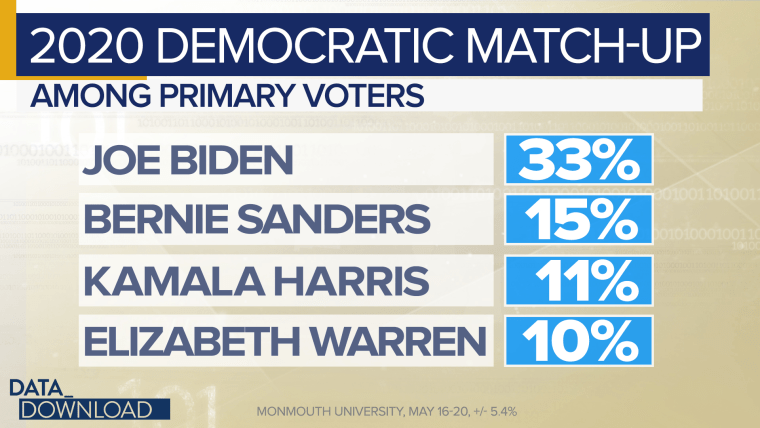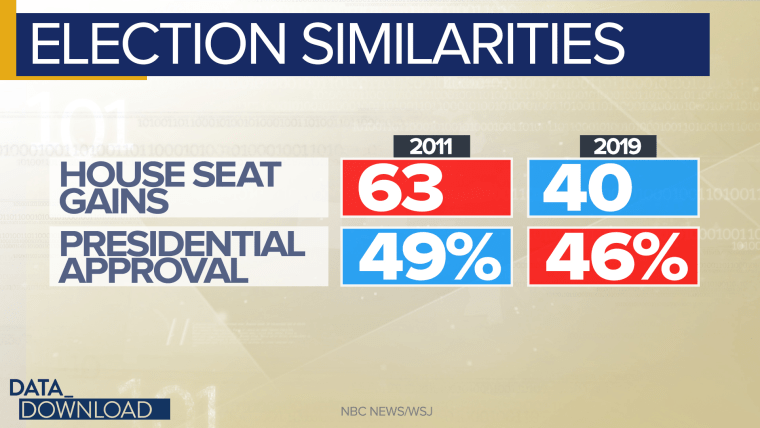WASHINGTON - It’s been a month now since Joe Biden announced he was running for president and the Delaware Democrat has been sitting atop the polls since then. The Biden boomlet has come despite conventional wisdom that said the candidates on left of the Democratic Party held all the energy going into 2020.
What’s happened to change the dynamic? Some of it may have to do with the situation in which the Democrats find themselves in 2019. Analysts and the media may be comparing the 2020 race to 2016, but on the Democratic side, it looks more like where the GOP was going into 2012.
Biden’s position vis-a-vis the Democratic field looks very similar to Mitt Romney’s one month after the Utah senator’s 2011 announcement.

Both men held double-digit leads over their nearest competitors in a big presidential field. Biden leads by 17 points in the Real Clear Politics polling average over Vermont Sen. Bernie Sanders. Eight years ago, Romney led his closest opponent, Texas Gov. Rick Perry, by a little more than 13 points.
And beyond the simple position of the frontrunners, there is the larger environment around the Democrats in 2019 and the Republicans in 2011.

Back in 2011, Republicans were feeling good about their chances in the presidential race. They were going up against an incumbent president, Barack Obama, who was under 50 percent job approval. Their party had just taken back 63 seats in the House of Representatives. And a large number of presidential aspirants were jumping into the campaign pool.
Sound familiar?
In 2019, Democrats are looking at an incumbent who is perpetually under 50 percent job approval in Donald Trump. They are coming off a midterm election where they picked up 40 seats. And their presidential field is bursting at the seams with more than 20 candidates vying for the nomination.
And there is another common thread between the 2019 Democrats and the 2011 Republicans: A deep, intense animosity toward the occupant of the White House.

Eight years ago, self-identified Republican primary voters gave Obama very low marks for handling his job as president – 90 percent disapproved, according to a June 2011 NBC News/Wall Street Journal poll. And they were strongly down on the president personally, 81 percent had negative views of him.
Today’s self-identified Democratic primary voters give Trump similar grades for his time as president, 88 percent disapproved of his job performance in the latest NBC/WSJ poll. And 88 percent of those voters also have negative feelings about the president personally.
That’s a lot of commonalities between 2011 and now.
Eight years ago, that environment and set of views yielded Republican Nominee Mitt Romney, a candidate who didn’t seem as conservative as the party that selected him. Republicans had just experienced the Tea Party revolution and despised the Affordable Care Act that became law under Obama, but party voters selected a former governor of Massachusetts who had implemented the health care plan that was the foundation for the ACA.
Ultimately, the Republicans’ prevailing party ethos in 2012 took a back seat to the desire to win back the White House with the most electable candidate.
Those arguments sound similar to where the Democrats stand today. In many areas – climate change, race relations, criminal justice – the party has moved leftward in recent years and in some ways, Biden seems like a poor fit for those changes. But to many voters, he also seems the most electable.
And if the 2012 patterns hold, the parallels might seem to be good news for team Biden, at least up to a point.
It might be time to start working on that acceptance speech at the Democratic convention in Milwaukee. But remember there’s one big caveat to the good news for Biden: Romney lost the 2012 general election to Obama.